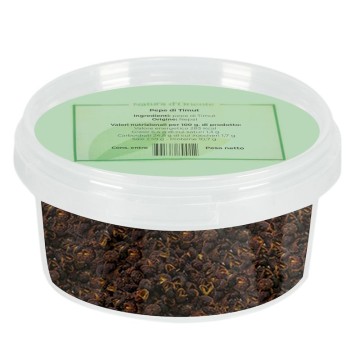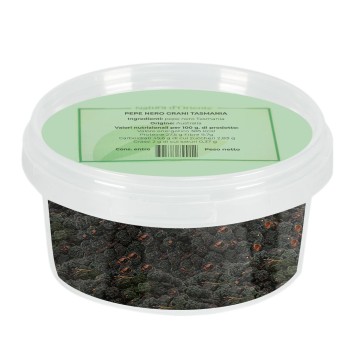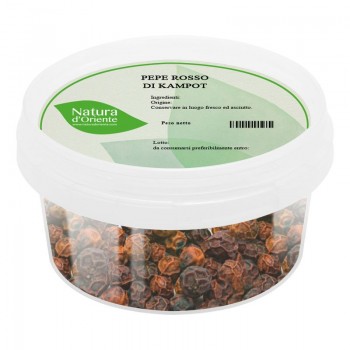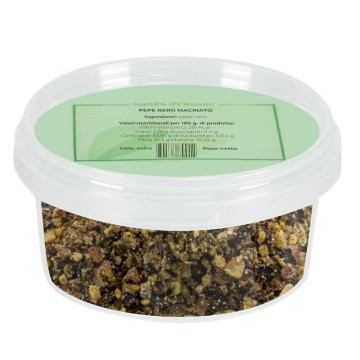White pepper is considered a "light" and aromatic pepper , it is obtained from the fruit of the same plant from which black pepper and pepper are obtained green, is the process that determines its different characteristics.
The plant and the fruit
The piper nigrum belongs to the botanical family of the pipperaceae, it is a woody liana that usually grows up to 4 meters (in some text you can also find greater heights but the normal size s which is agreed is that). The leaves are oval, alternating, from 5 to 10 cm in length and from 3 to 6 in diameter. It likes moist and well fertilized soils. The fruit is a drupe, that is a berry containing only one seed, green when still immature and dark red when ripe.
How to make white pepper
Black pepper, white pepper and green pepper all derive from the same plant the different appearance is due to the moment in which the fruit is picked and to the procedure to which it is subjected. White pepper is nothing more than the sole seed of the ripe fruit. As we said the ripe fruit has a dark red appearance, to obtain the white pepper it is immersed in water and left to macerate for a week, this process decomposes the pulp of the fruit, then the residues are removed and the naked seed remains which is dried. . Traditional maceration in water is not the only method used to strip the seed, biological, chemical and mechanical methods are also used.
Origin and cultivation
The piper nigrum is a plant native to the south and south-east of Asia, but today it is cultivated and exported also from other tropical countries, especially from the Asian continent but also from Africa . Historically, the Western world became aware of it as a (very precious) spice from India already in ancient times and it remained a product for the rich until the opening of new trade routes with the great explorations of the sixteenth century. Properties and nutritional characteristics of white pepper Even the seed of piper nigrum contains piperine so the properties are similar to those of black pepper, it stimulates the gastric juices so it is an excellent digestive, for the same reason it is not suitable for those suffering from gastritis. Tradition also attributes diuretic and antipyretic abilities but there are no modern scientific studies to confirm this. There is an interesting study from 2016 followed by one from 2020 according to which piperine has an inhibitory action on colorectal cancer cells.
Curiosities about pepper
Even white pepper has been known since ancient times, the Romans aromatized (among other things) even vinegar and wine. White pepper is generally more expensive than black even though it comes from the same plant because the processing is longer and because, obviously since only the seed is used, it has less yield. In ancient Rome there was even a dessert based on white pepper, the seeds were roasted and covered with honey. The historical importance of pepper as a bargaining chip is overlooked and underestimated by those who are not passionate about history, it was even one of the pillars of trade between Europe and the indies. Even in the Italian culinary tradition, pepper also finds a place in sweet preparations, for example the Camaiore pepper cake or the gingerbread or pampepato which is present with different recipes (pampepato from Terni, gingerbread from Siena, pampepato from Ferrara, panpepato from Anagni). Why Does Pepper Make You Sneeze? The "culprit" is always the irritating action on the mucous membranes of piperine, the same reason why it is not recommended for those suffering from gastritis or ulcers.
White peppercorns in the kitchen
White pepper is preferred when you want to flavor a dish with a more delicate flavor than black pepper, in the recipes of chefs who also look chromatic considerations also enter the presentation of the dish and white pepper is preferred on light dishes. Among the many recipes available we have chosen a delicious and easy to prepare dish.
Cacio e pepe croquettes
Ingredients for 20 pieces
- Red potatoes 1 kg
- Pecorino Romano aged 100 gr
- Black peppercorns 2 teaspoons
- White pepper in grains 2 teaspoons
- Eggs 1
FOR BREADING
- Eggs 3
- Breadcrumbs 100 gr
- FOR FRYING Oilof seeds to taste
Preparation
1) Wash the potatoes and put them in a saucepan with cold water
2) Boil the potatoes for about 40 minutes from the moment of boiling, or until they are soft enough to pierce them with a fork.
3) Meanwhile put the black peppercorns and white peppercorns in a mortar and pound them with a pestle (if you don't have a mortar and pestle you can use a meat mallet).
4) Grate the aged pecorino and set aside.
5) When the potatoes are cooked, drain and mash them in a bowl with a potato masher.
6) When the potatoes are warm, add the grated pecorino cheese, the crushed peppercorns and the egg to the bowl.
7) Knead with your hands until you get a homogeneous mixture.
8) Always keeping your hands moist, take a part of the dough and shape it to obtain the classic cylinder shape of the croquettes, lightly squeezing the ends (with these doses you should get about 20 croquettes).
9) Pour the eggs and breadcrumbs into two separate containers.
10) Pass each croquette first in the egg and then in the breadcrumbs.
11) Repeat the previous steps once again (first in the egg and then in the breadcrumbs) to obtain a crisper breading.
12) Heat the seed oil in a saucepan and bring it to a temperature of 170 °, then immerse a maximum of 2 croquettes at a time and fry for about 3 minutes until they will be beautiful golden. 13) Drain the croquettes with a slotted spoon and transfer them to a sheet of absorbent paper to remove excess oil.
14) Serve the cacio e pepe croquettes still hot, but be careful not to burn yourself!






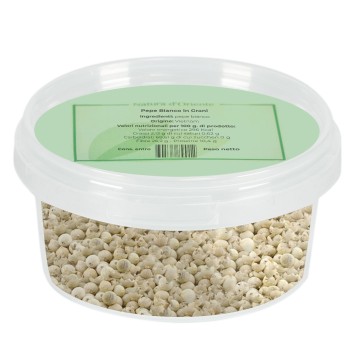




 No reward points for this product.
No reward points for this product.








